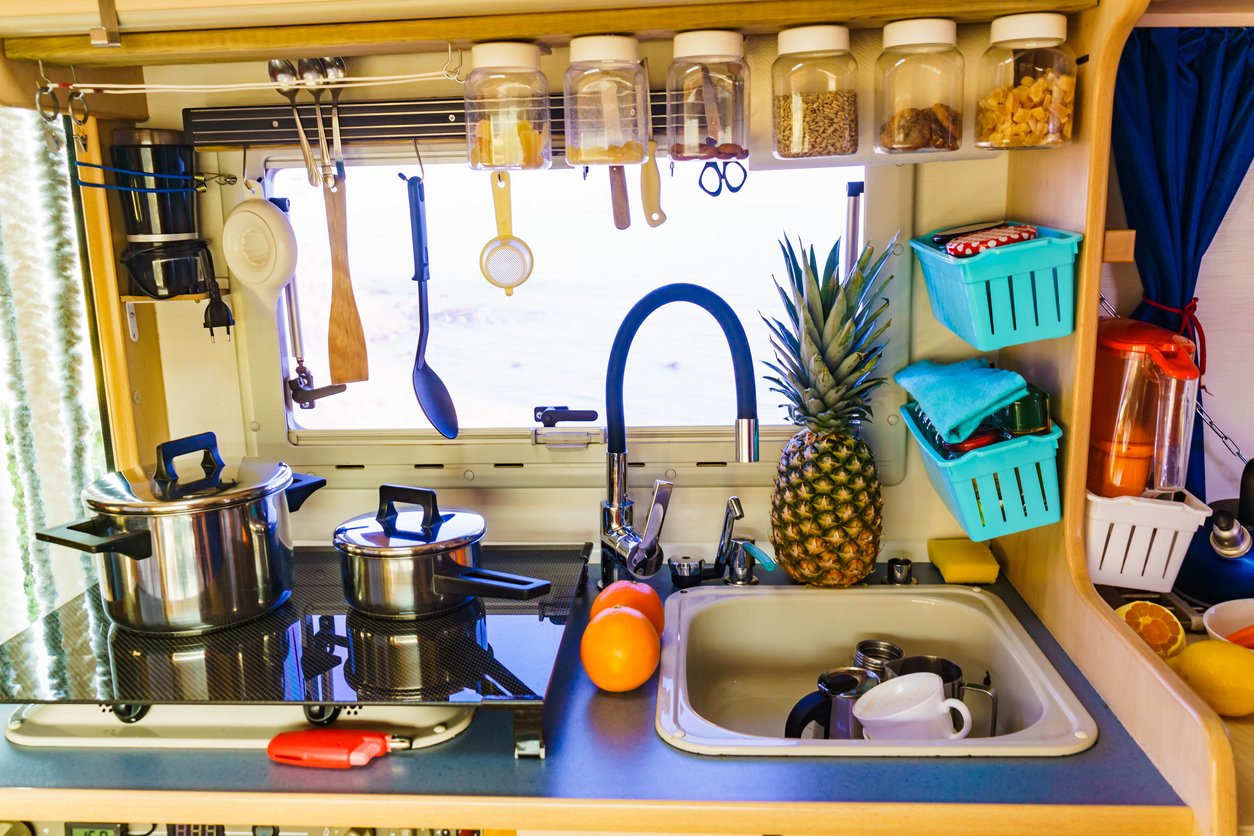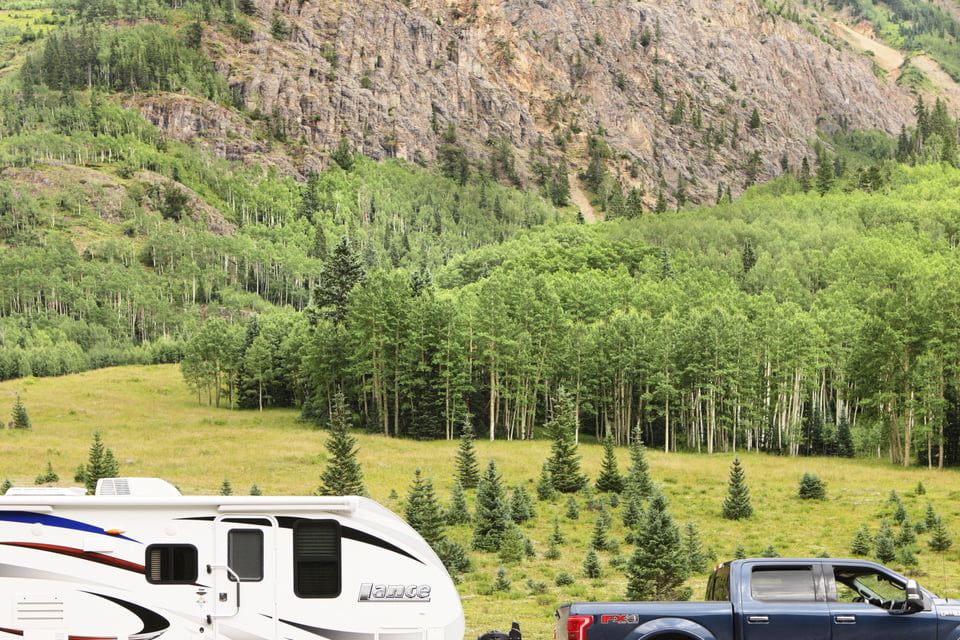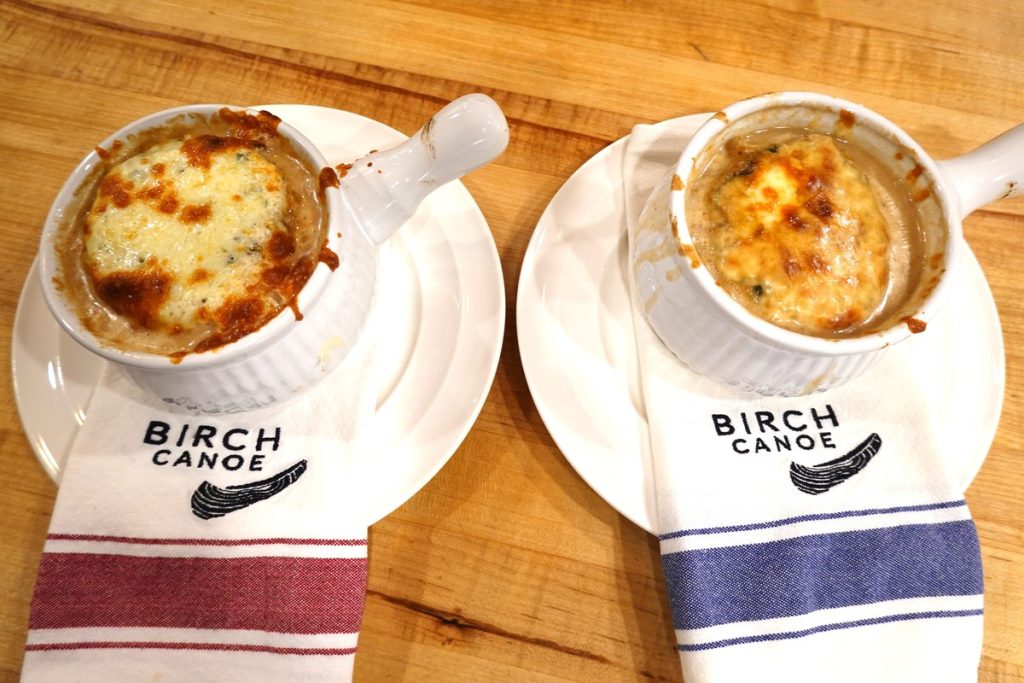One of the best things about RVing is taking our kitchen with us and making our RV home away from home. This means we have greater control over what, when, and how we eat – and our travel budget, too!
That said, how we store food in an RV differs from how we store food in a sticks and bricks home. Everything in the RV moves and vibrates when we’re on the road, increasing the risk of breaking and spilling the contents of our refrigerator and food cupboards. The footprint of our RV kitchen is usually smaller, resulting in fewer usable surfaces and less food storage space. This means we must pay attention to how to store our food safely and efficiently during our travels. Although we can’t generally control the original configuration of our RV kitchen, there are many things we can do to make it work better for us!
Let’s decide what we want for our next adventure!
There are so many RVing options available to us: Boondocking? Longer-term-in-one-spot with access to EWS? A weekend adventure? Travelling on the road every day? Travelling outside of Canada? Once we’ve decided where we want to go, we can plan for what food to bring and how best to store it. The amount and type of food we carry when boondocking will differ from what we take for a weekend adventure or if we stay longer in an RV park with access to services. The type of RV we’re using also influences what food we can bring and how it’ll be stored. The kitchen configuration in Class A typically offers more space than a teardrop trailer or Class B. If we’re boondocking, we also need to ensure that the way we store our food will not attract bears or other wildlife to our RV.
If we plan to travel outside of Canada, it’s important to check the government websites to learn what foods we’re allowed to bring from Canada into the USA and into Mexico.
Safety First
Whatever our travel plans, our primary concern at all times when storing food is to ensure that we follow safe food handling practices and stay healthy. Bring potable water if it’s not supplied at the campground and be prepared to treat non-potable water if needed. Cook meat thoroughly and use a digital food thermometer to confirm that the required internal temperature has been reached.
We’ll need to turn on our fridge the day before we stock it. Although a residential fridge may not require as much time to chill, if we’ve a 12-volt absorption fridge, we’ll need to allow at least 24 hours to reach a safe temperature before transferring our food to it. To maintain the consistency of cooler temperatures, ensure that the food we’re transferring to our RV fridge is already frozen or cold. Allow space between all items so that air can circulate and pass evenly around the interior. We’ve found that using 2 or 3 RV refrigerator fans helps keep the temperature more stable and that placing a refrigerator/freezer thermometer in both the fridge and the freezer sections helps us monitor the internal temperatures of the refrigerator and freezer.
Maximizing food storage space in RVs
Here are some suggestions gleaned from fellow RVers about food storage:
-
-
- Think vertically: Consider installing over-the door tiered pantry door organizers, expandable stackable shelving, or magnetic wall-hung spice tins
- Think square: Using square or rectangular storage containers (instead of round ones) allows for more efficient use of space.
- Think inside the box: Use rectangular or square clear plastic storage bins, lined with an old hand towel, to store jars of food and canned goods. One RVer places a clean sock over each glass container (which are then stored in the clear plastic bins) to protect them from road-shock damage and to also silence the “glass clatter”. Taking a few minutes before heading out on the road to install extendable tension rods in the cabinets and in the refrigerator helps prevent items from jumping out at us at the end of the day.
- Think in real time: Plan meals in advance to identify exactly what you need (and no more). Having a daily plan helps prevent hoarding too much food and wasting storage space for items that will not be used on the trip. You can always buy more if you run out! Check out these additional ideas on planning for your meals on the road.
-
If there’s one guiding principle we’ve embraced in the RV world, it’s “Cook, know thyself.” What we cook must reflect what we want from RV living. This enable us to determine what our menu plans will be, what food we will bring with us, and –
keeping our limited space in mind – identify what works best for us when it comes to storing food safely and efficiently in our home away from home!




